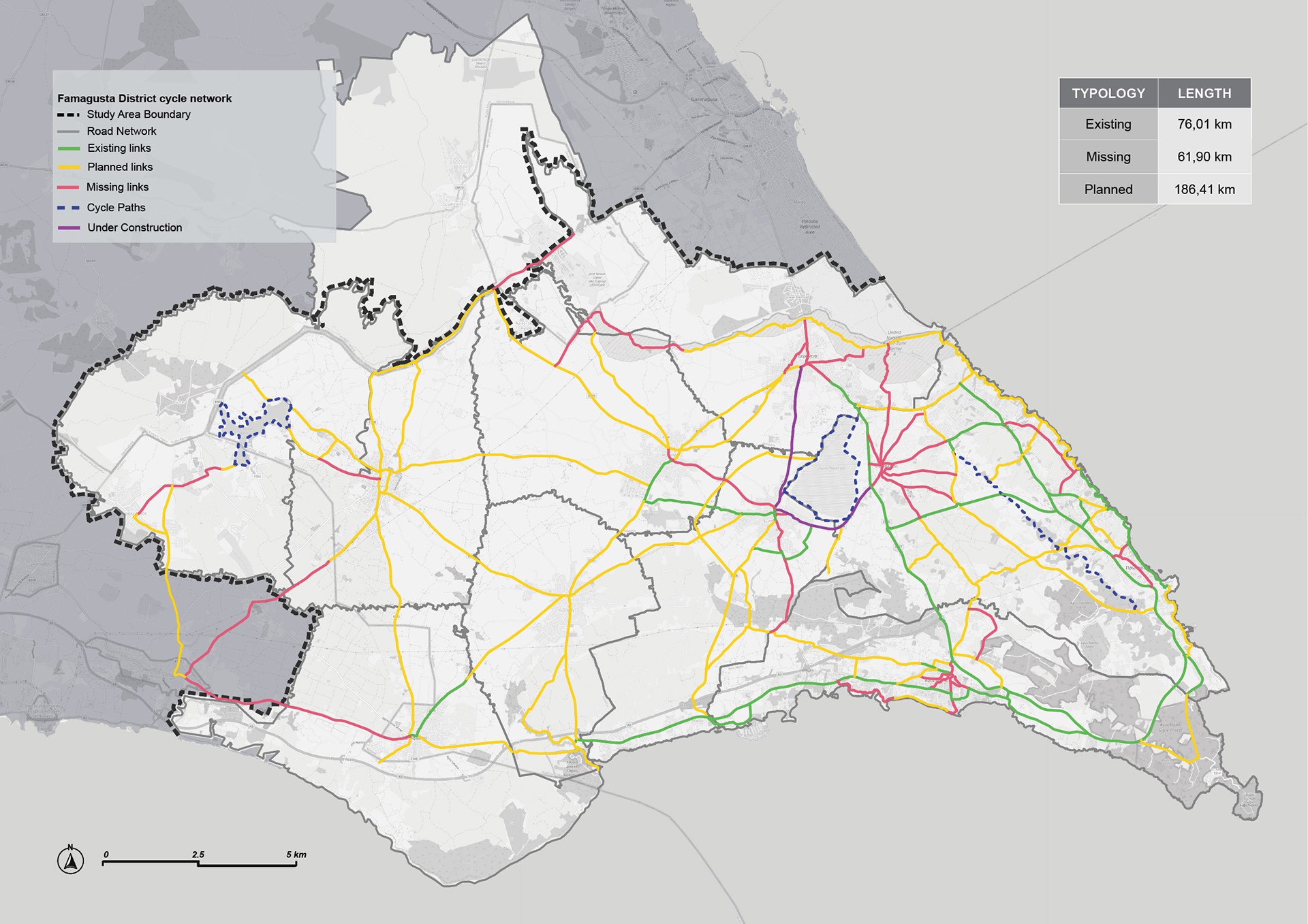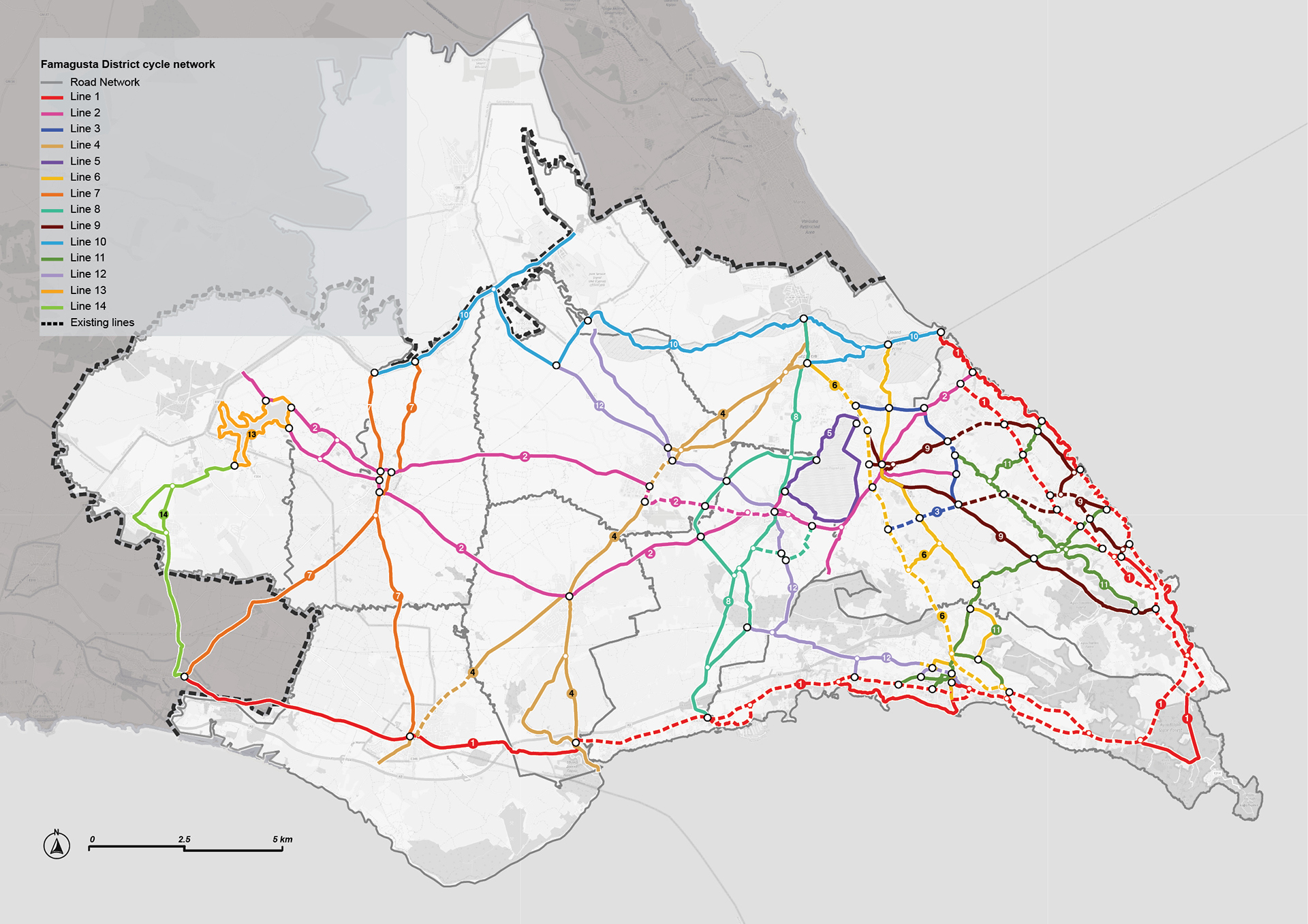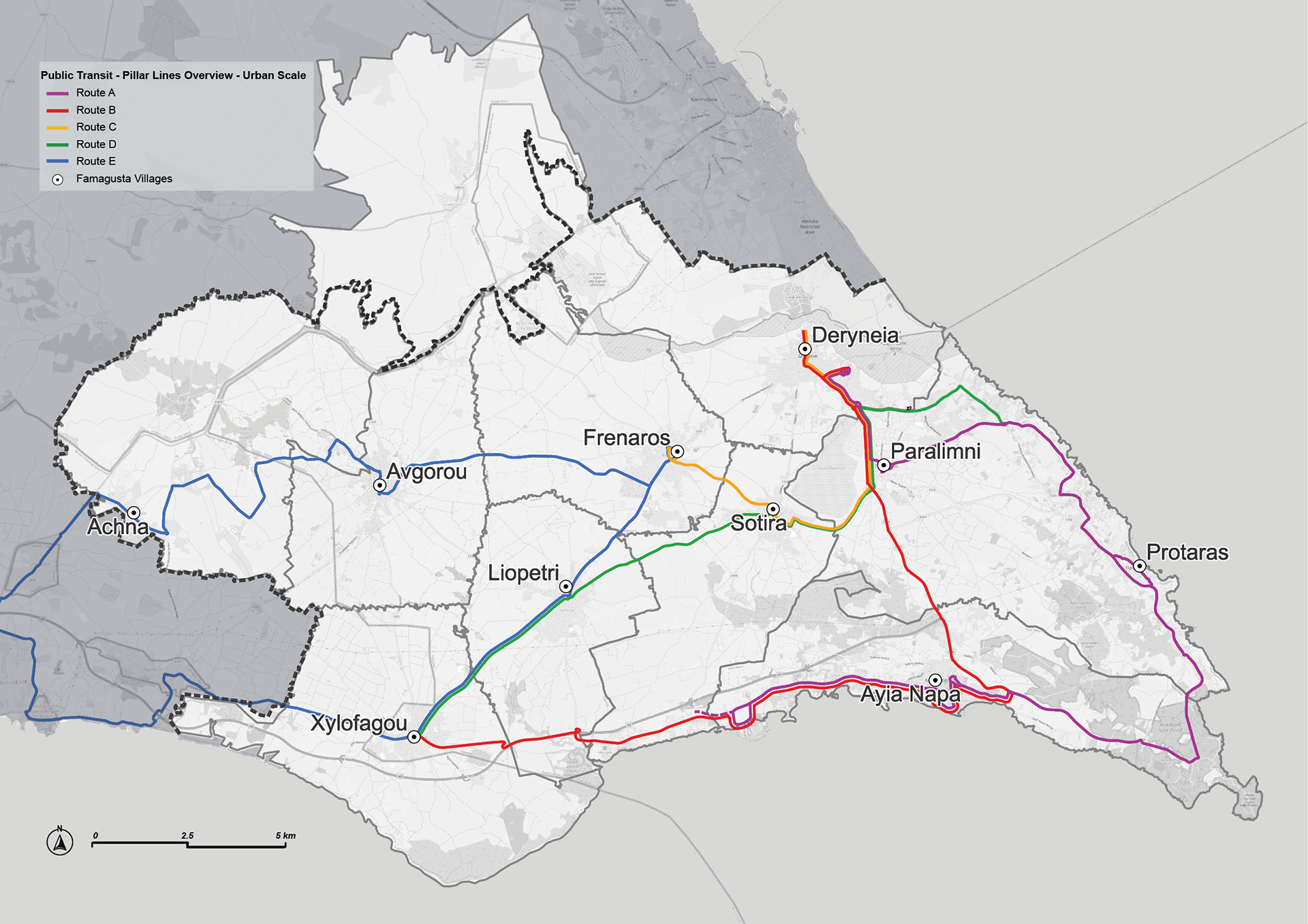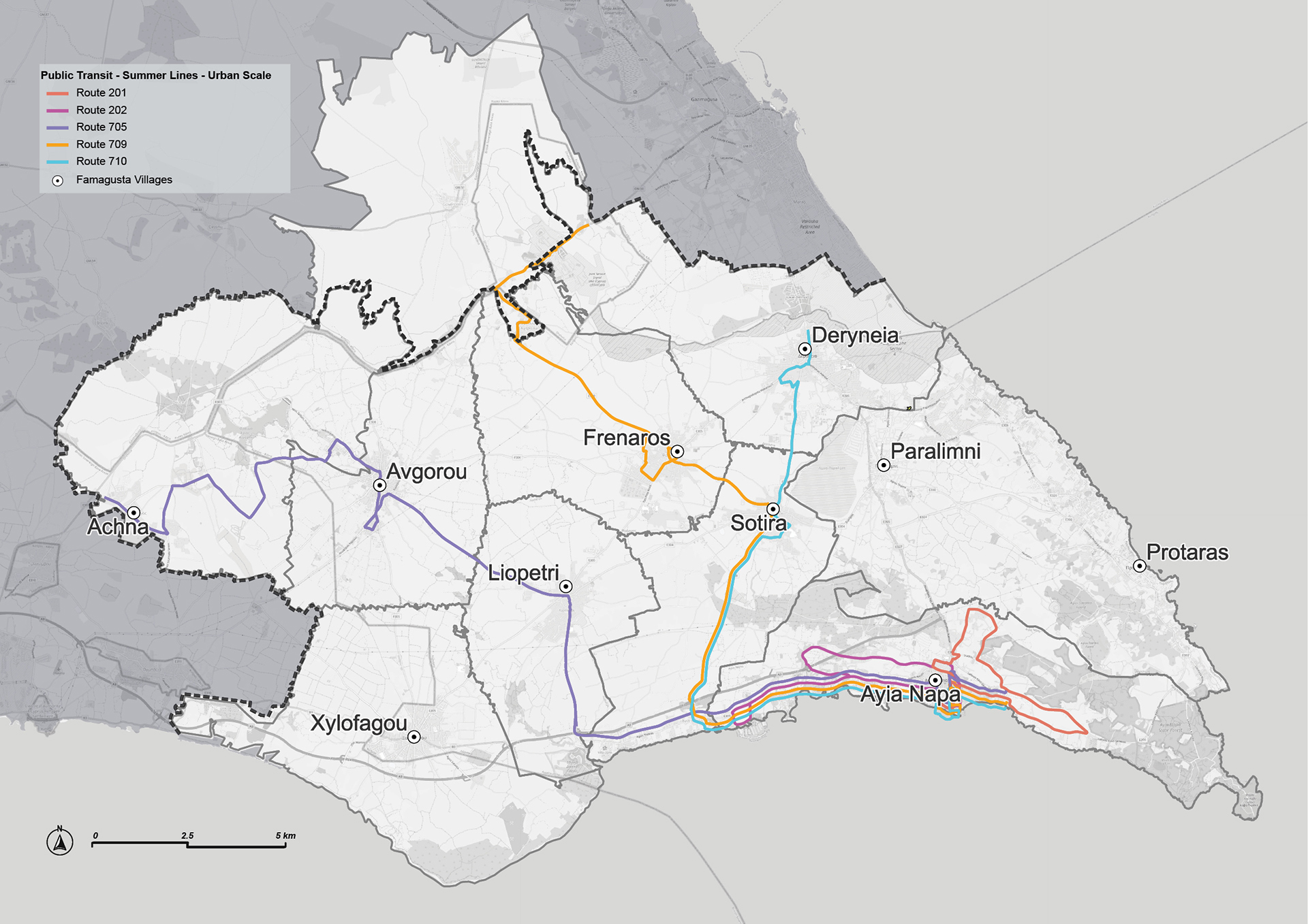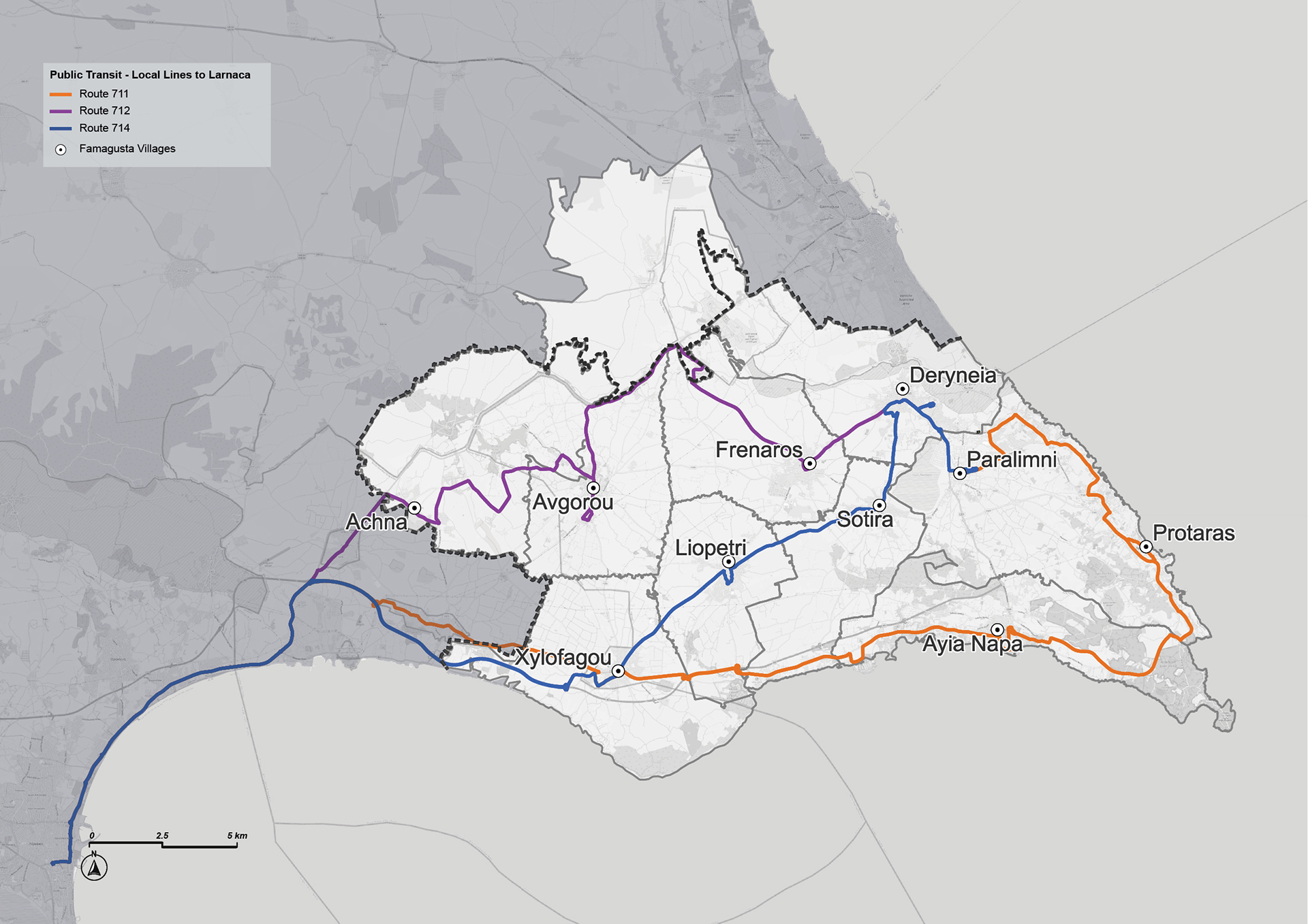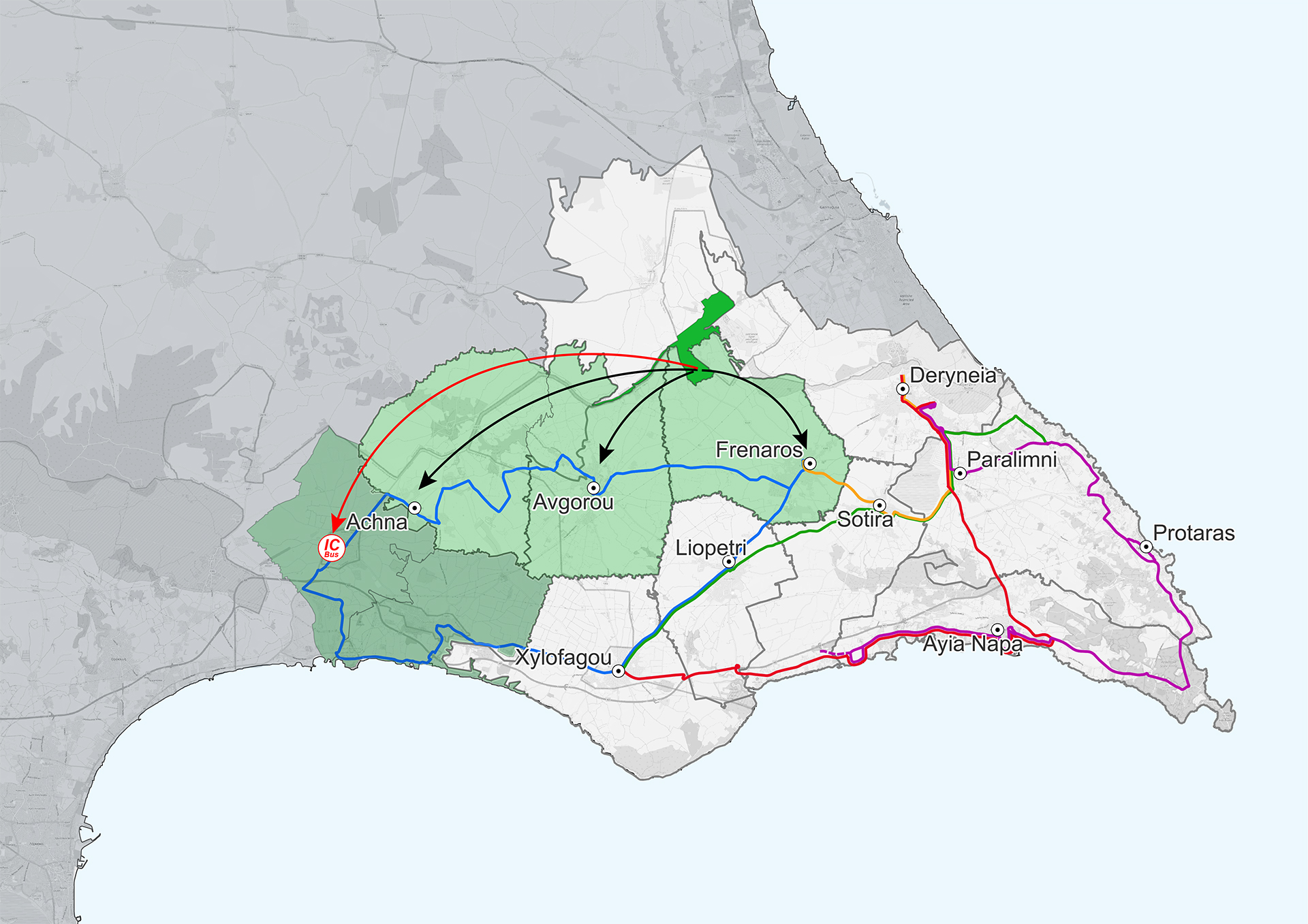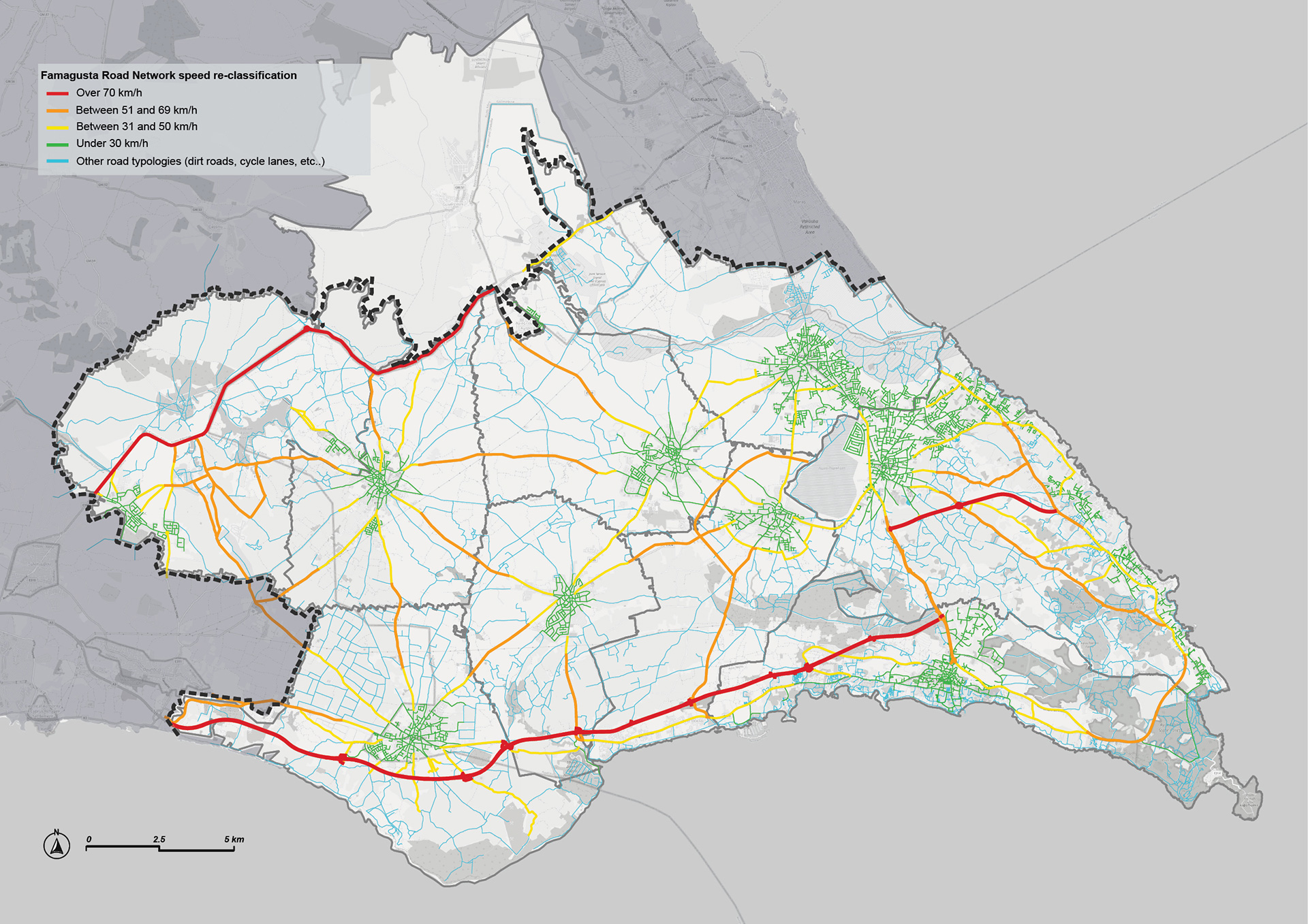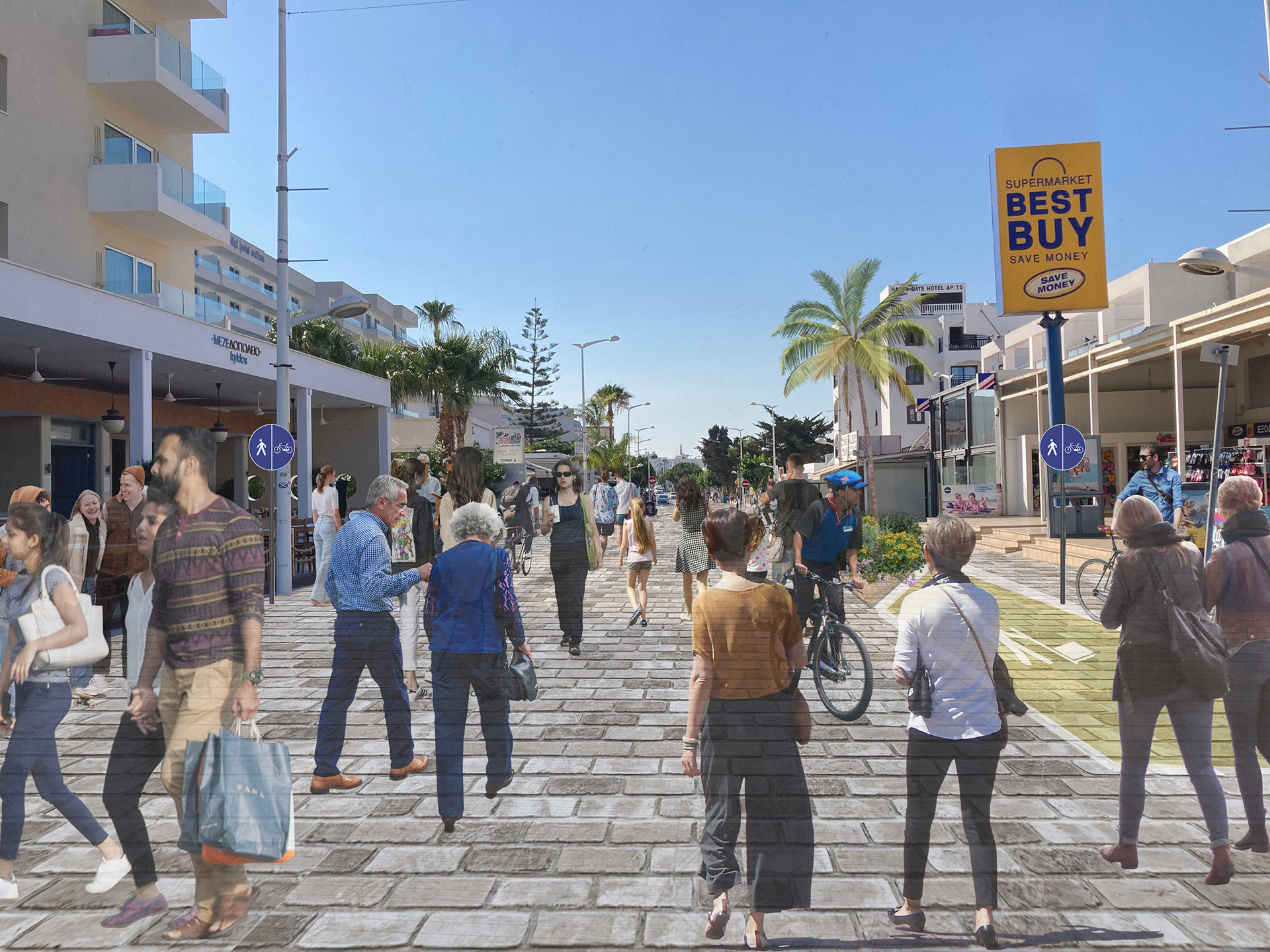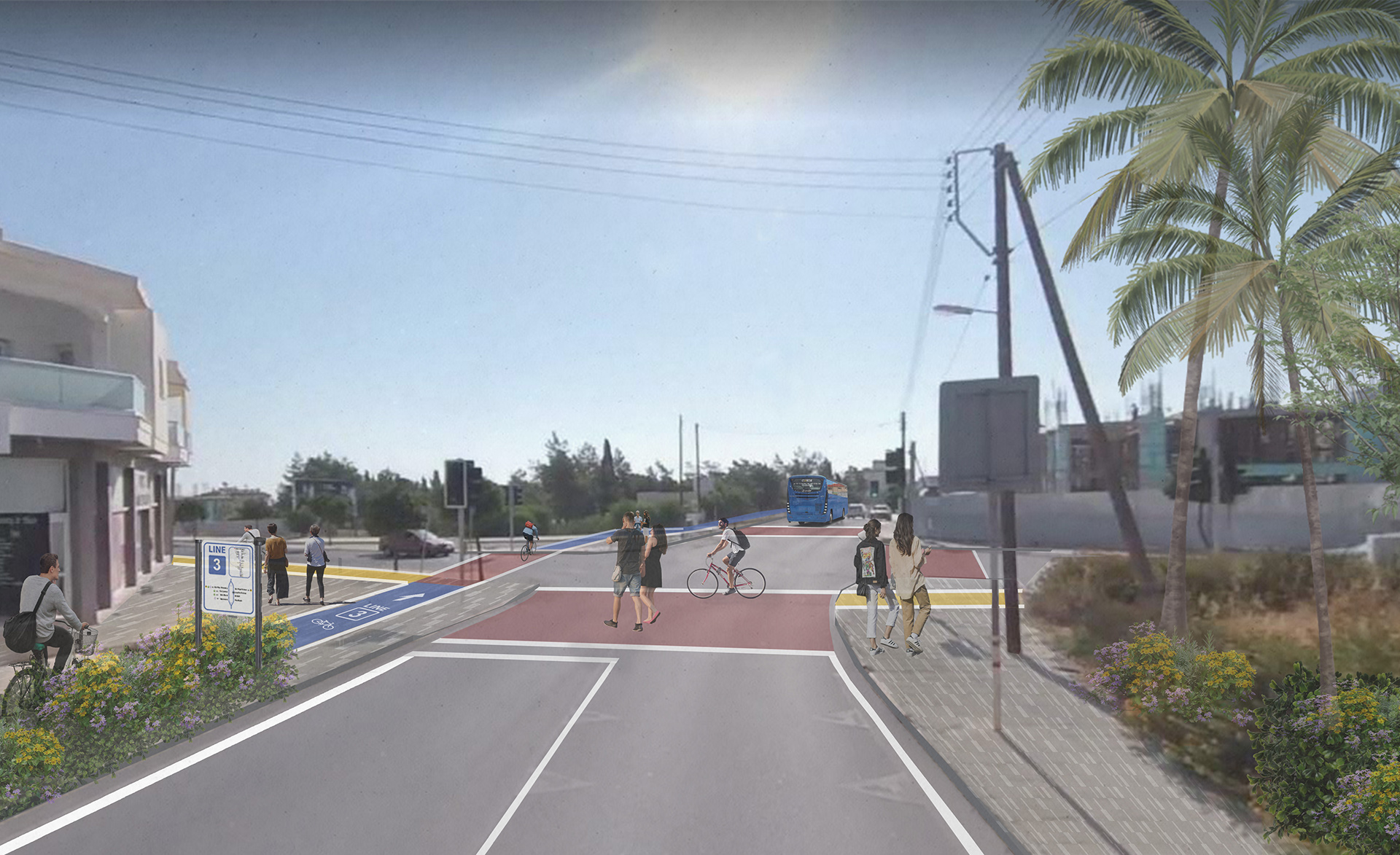SUMP Famagusta
Cyprus
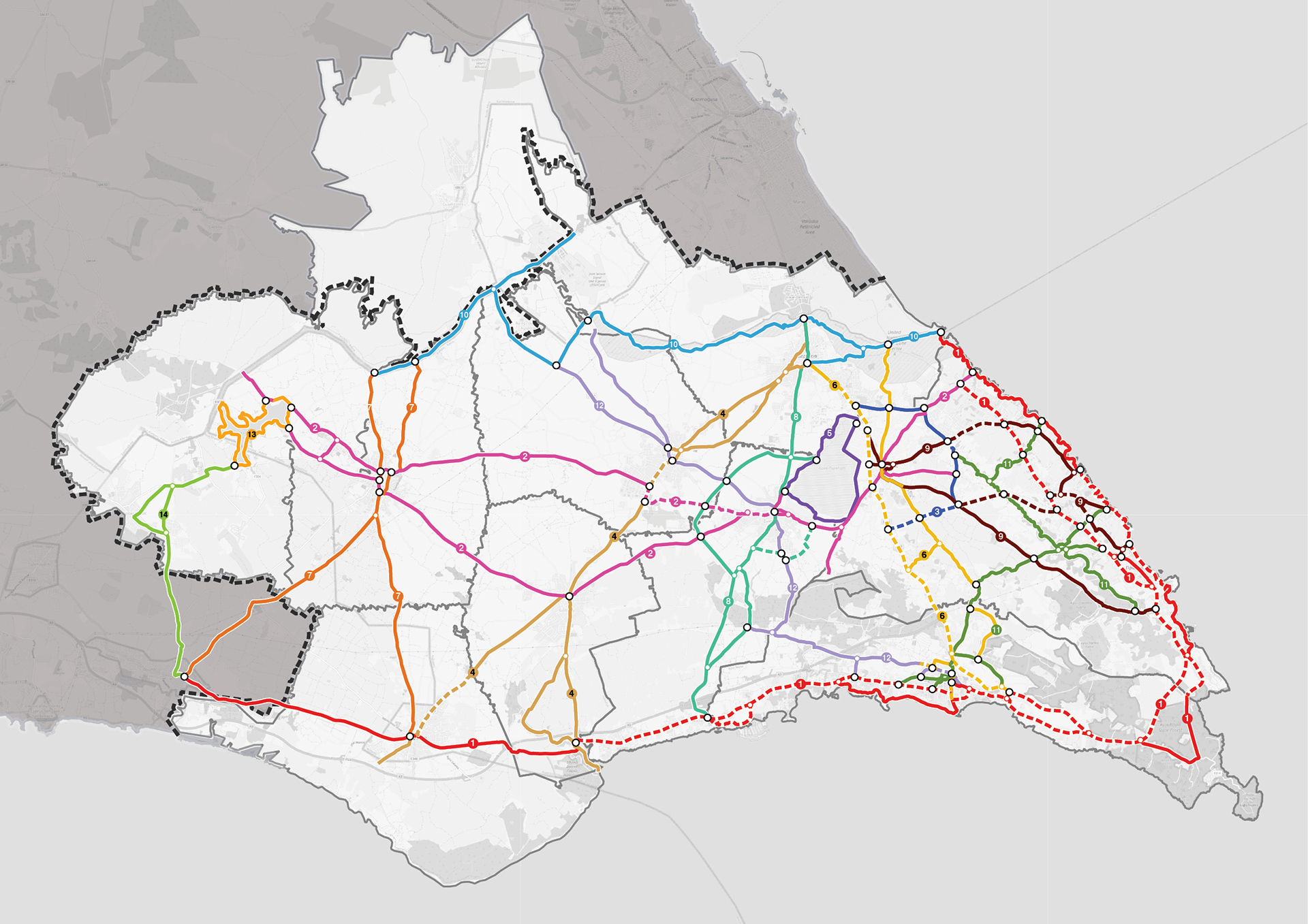
The project involved the development of a Sustainable Urban Mobility Plan (SUMP) for Famagusta District in Cyprus. The Plan was drafted following ELTIS guidelines (the European guidelines for the drafting of SUMPs), with some of the plan’s measures being implemented through funding from the RRF (the Cyprus Recovery and Resilience Plan).
Famagusta District is located in the south-eastern part of the island of Cyprus. Its geographical location is unique as it forms an enclave surrounded by the UN buffer zone to the north, the Sovereign British Areas to the west and the Mediterranean Sea to the southeast.
This area is a well-known tourist destination where certain lines of the public transport system run more frequently to accommodate the incoming tourists.
The study area comprises four municipalities and six communities. The district has a population of approximately 50,000 inhabitants spread over 10 communities, with notable urban sprawl and subsequent car dependency.
This is reflected in the number of vehicles per thousand inhabitants, as well as in the modal split, which suggest that 80% of trips are made by individual motorised transport and only 8% by public transport.
Location
Cyprus
Client
Ministry of Transport, Communications and Works Cyprus
Main expertise
Public Transport Consultancy; Regional & Urban Transport Planning; Soft Mobility & Mobility On Demand; Pedestrian and Cycle Studies
PROJECT HIGHLIGHTS
- 185 km of planned cycle network
- Servizi DRT-Demand Responsive Transit per collegare le aree a bassa densità alle linee portanti e al servizio InterCity
- Road network measures include ‘Road Diet’ interventions, a re-classification of speed limits, and the implementation of a series of 30 km/h zones.
Project gallery
Our contribution
In order to move towards a more sustainable mobility model, the Ministry of Transport (with partial funding from the EU) has commissioned MIC-HUB and A.L.A. Planning Partnership Consultancy LLC to develop the SUMP as a tool to define measures to reduce car dependency.
The use of a four-stage model accompanied by an extensive survey campaign was fundamental to develop the plan. These analyses took into account the seasonal nature of transport in Cyprus, given the increase in population and mobility needs during the summer.
Following this analysis phase, an in-depth participatory process was carried out with the authorities and the local population. This process allowed us to explore some of the themes in the plan in more detail, such as public transport and the imbalance in traffic between the winter and summer seasons.
The SUMP proposed an integrated approach towards a balanced development of all transport systems, with the simultaneous development of alternative modes of transport.
In line with EU targets, the SUMP’s high-level objectives focused on:
• Sustainability: a more sustainable public transport system;
• Safety: safe mobility options for everyone;
• Accessibility: a region that is accessible and easy to navigate;
• Public realm: quality environment for residents and tourists;
• Awareness: generate a renewed awareness of Famagusta District.
This enabled the development of a series of strategies, which were then transformed into specific actions.
In an active mobility framework, the SUMP proposes expanding the cycling network by constructing new bike lanes for a total of 185 planned km. This new cycling network, called a ‘bicipolitana’, features 14 distinct lines that run throughout the district, connecting various communities, key attractors and POIs.
To address the current imbalance between winter and summer public transport services, MIC-HUB has developed a new transport strategy based on reorganising the network, particularly at the hierarchical level.
The new network categorises the lines more clearly, introducing interchange nodes and a scheduled timetable to allow better management of resources.
The lines of the new system have been divided into four categories according to the level of service: pillar lines, local lines, summer lines and night lines. This proposal for the PT network also includes DRT (Demand Responsive Transit) services, which connect low-density areas to the pillar lines and the InterCity service. There are also plans to renew the passenger infrastructure, with new Park&Ride facilities to be added in strategic sites.
The SUMP also provides measures for the road network, including ‘Road Diet’ interventions, a re-classification of speed limits, and the implementation of a series of 30 km/h zones.
These interventions are expected to yield substantial benefits in three main areas:
• road safety;
• reduced road-related fatalities;
• reduced noise levels.
The SUMP aims to transform Famagusta from a car-oriented district to a region with more space for social activities and soft mobility. It also proposes to limit the access of cars and HGVs to urban centres, reduce pollution and remove on-street parking where necessary to promote cycle lanes and public transport.
Approved in 2023, the SUMP implementation was put in motion in 2024. The plan has a ten-year horizon and is expected to end in the year 2033, when all measures and associated projects should be completed.
